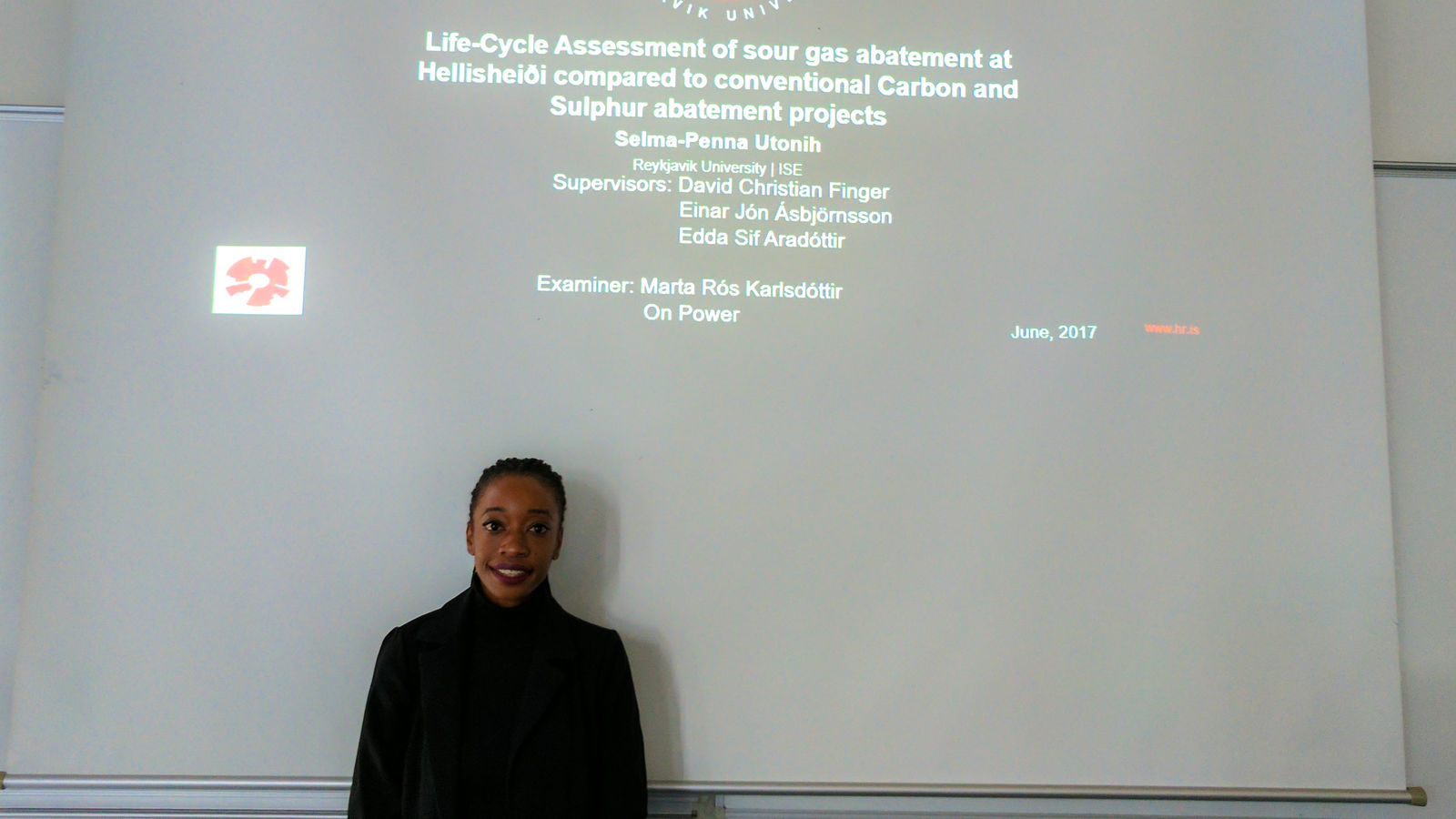MSc Thesis: Life-Cycle Assessment of Sour Gas Abatement at Hellisheiði compared to Conventional Carbon and Sulphur Abatement Projects
Selma-Penna Utonih successfully defends her master's thesis
REYKJAVIK, June 6 – Master's candidate of Sustainable Energy Engineering, Selma-Penna Utonih, has just successfully delivered her master's thesis project, completing a life-cycle assessment of sour gas abatement at Hellisheiði Geothermal Power Plant compared to conventional carbon and sulfur abatement projects. Throughout her work, Penna was supervised by Dr. Einar Jón Ásbjörnsson and Dr. David C. Finger here at Reykjavik University, along with Dr. Edda Sif Aradóttir from Orkuveita Reykjavíkur (Reykjavik Energy).

Penna describes her work succinctly stating that the purpose of her project was to evaluate the environmental effects and carbon footprint of this project. She continues stating that the project gave a comparison of its results to the Sleipner project in Norway that looks at sequestration of CO2 in the Utsira saline aquifer formation and the Weyburn Enhanced Oil Recovery (EOR) that sequesters CO2 for oil recovery are evaluated as well to quantify how the SulFix II project measures up on a global scale.
Penna's comprehensive and quantitative Life Cycle Inventory (LCI) involved the collection of first hand data from Reykjavik Energy, the owner of the abatement project, based on the process parameters of the capture process, pipeline and injection technology and injection well specifications and energy requirements for each stage of the CO2 and H2S abatement project at the Hellisheiði Geothermal Power Plant. From this data, Penna created a flow model depicting the system boundaries of the study which excluded power generation from the power plant. As well, secondary data was taken from a pre-existing Ecoinvent 3.3 LCI database which modeled inputs/outputs of various processes in detail and their associated emissions.
She then created a model of the SulFix II process by using company data, secondary data as well as calculations done for various assumptions made where data was not available and were aggregated per the functional unit of tonnes CO2 and tonnes H2S mineralized chosen for this project. Each phase of the SulFix project (capture, transportation, storage) was modeled as separate processes within the OpenLCA software and in the final stage were combined into one product system.
The environmental impacts of the inputs and outputs of the product system were weighed against chosen impact categories Global Warming Potential (GWP), Acidification Potential (AP), Eutrophication Potential (EP), Land use and Resource depletion of Water using the International Reference Life Cycle Data System (ILCD, 2011) within the Ecoinvent Life Cycle Impact assessment database in the OpenLCA software.
Penna found that across the aforementioned environmental impact categories through the SulFix II abatement process chain, the capture plant which consisted of an absorption column that separates and captures CO2 and H2S from the power plant for re-injection contributed the highest percentage share of the impacts due to its high-energy consumption rates derived from geothermal energy production and its associated emissions factors. She therefore concluded that the capture phase was the environmental hot-spot in the SulFix chain.
Penna explains that the share of the transportation pipelines, storage and monitoring phases on the assessed impact categories in comparison to the capture phase had the smallest percentage contributions due to the short transportation distance, excluding the drilling of the storage in the study as well as the lower energy consumption rates of these stages.
With an assessed Global Warming Potential (GWP) of 0.28 kgCO2-eq per ton of CO2 and H2S mineralized Penna found that SulFix II had a low carbon footprint when compared to the Sleipner and Weyburn EOR project, which was also true across all the other environmental impacts studied. Overall the SulFix II project presented the best and lowest results attributed to the projects far lower total energy consumption rates than the more larger scale projects it was compared to.
Congratulations Penna on an excellent thesis!
